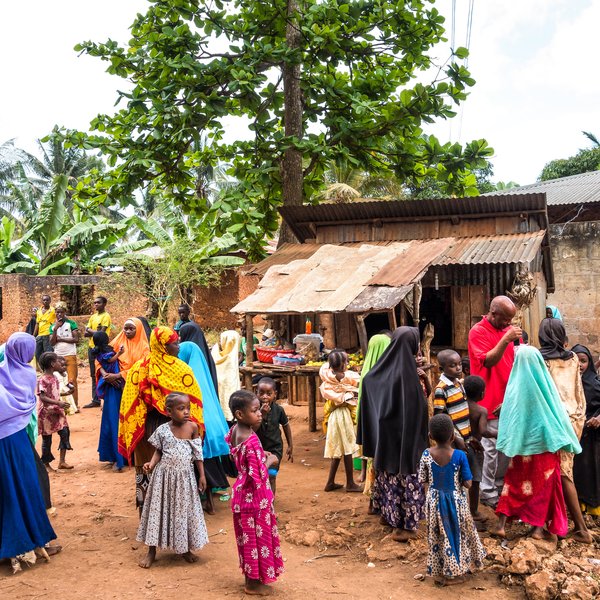Prindex collects data to assess perceptions of tenure security worldwide, focusing on individuals' perceived risk of losing rights to their property. The survey is nationally representative of the adult population, including women, youth, and people without official property titles or who do not own their property, aiming to foster inclusivity in the land rights conversation. Data collection occurred in two main rounds: round one (2020) gathered information from 2018 to early 2020 across 140 countries, while round two (2024) took place in 2023 and 2024 across 108 countries.
Measuring perceived tenure security
The Prindex approach centres on a simple question: "In the next five years, how likely or unlikely is it that you could lose the right to use this property, or part of this property, against your will?" Respondents who answer "likely" or "very likely" are classified as tenure insecure. The survey also explores the reasons behind these perceptions through a predefined set of factors (see Section 1.3 of the Comparative Report).
Along with tenure security data, Prindex collects demographic and socioeconomic information about respondents and details regarding property characteristics, such as possession of documentation verifying property rights. This comprehensive approach enables nuanced analysis of factors influencing perceptions of tenure security.
Development and adaptation
The Prindex methodology has been refined through careful research, expert consultations, and pilot surveys conducted before the 2020 global rollout. This process involved evaluating various question formats, adjusting their placement within the survey, and fine-tuning response categories. The goal was to ensure clarity and consistency across diverse settings.
Data collection methods
Data were collected from adults aged 18 and over through computer-assisted personal interviews (CAPI), telephone interviews (CATI), or web-based surveys (CAWI). Most data were gathered as part of the Gallup World Poll (GWP), following its sampling methodology.
Changes between rounds
Some adjustments were necessary between the 2020 and 2024 rounds. The number of countries was reduced from 140 to 108 due to funding limitations, and data collection methods were altered in nine countries (e.g., switching from CAPI to CATI, or introducing CAWI in China). Sample sizes and coverage also varied. The post-stratification adjustments to sampling weights will address many of the differences in respondent characteristics introduced by these changes. Land and property documentation lists used in the survey were also updated.
Sample size and composition
In the 2020 round, Gallup increased their sample sizes in each country to obtain the required 1000 interviews with respondents aged 18 years or older, as some interviews were conducted with respondents aged 15 to 17. In 2024 this was not possible due to funding limitations. Therefore, the samples of population aged 18 or older in each country in 2024 round are smaller, (see table A1 in the Comparative Report). While this reduction does not significantly impact the point estimates, it may increase the degree of uncertainty and limit the disaggregation of results.
Country coverage and limitations
The exclusion of some countries in the 2024 round, particularly in Western Europe and high-income regions, affected global and regional data aggregation. A few countries were also omitted due to security concerns or challenges with survey permissions. Prindex has adjusted the 2020 data to reflect only the 108 countries included in the 2024 round for consistency.,
The GWP’s sampling frame does not always cover the entire population in each country. Typically, less than 5% of the population is excluded. The size and locations of the excluded population can also change between rounds of data collection. This variability may introduce bias, which is addressed through post-stratification adjustments.
Analysis methods
Data analysis is conducted using Stata Statistical Software, accounting for weights, strata, and primary sampling units (PSUs). Finite population correction is not applied. Variance is estimated using the Taylor linearized method, with adjustments for strata containing a single PSU through the scaled option. Linear probability models are used to estimate differences between subpopulations and changes over time. No adjustments are made for multiple comparisons.
Weighting
Three types of weights are applied in the analysis for all of Prindex’s reported results:
- Design weights: Account for differences in sampling probabilities within countries.
- Calibration/post-stratification weights: Align sample characteristics with known population distributions, typically gender, age, and educational attainment.
- Population size weights: Adjust for population size differences between countries when calculating regional or global estimates. These are based on population estimates from the United Nations, Department of Economic and Social Affairs, Population Division (2024)
Aggregations
Aggregations for regions and income groups follow the 2023 World Bank classifications. Countries which are excluded from the income classifications, such as Venezuela are excluded from the relevant aggregated results.
Small Samples
For small subpopulations or infrequent responses, Prindex applies specific criteria:
- No estimates are reported for groups with fewer than 10 respondents.
- Results with wide confidence intervals (exceeding ±20 percentage points) are flagged for uncertainty.
- Confidence intervals or results from statistical tests are not provided for responses with fewer than 10 respondents.
Further Information
All data are available for non-commercial use. For a deeper understanding of the data collection process, download the codebook and the Q&A on global survey methods from this website.



